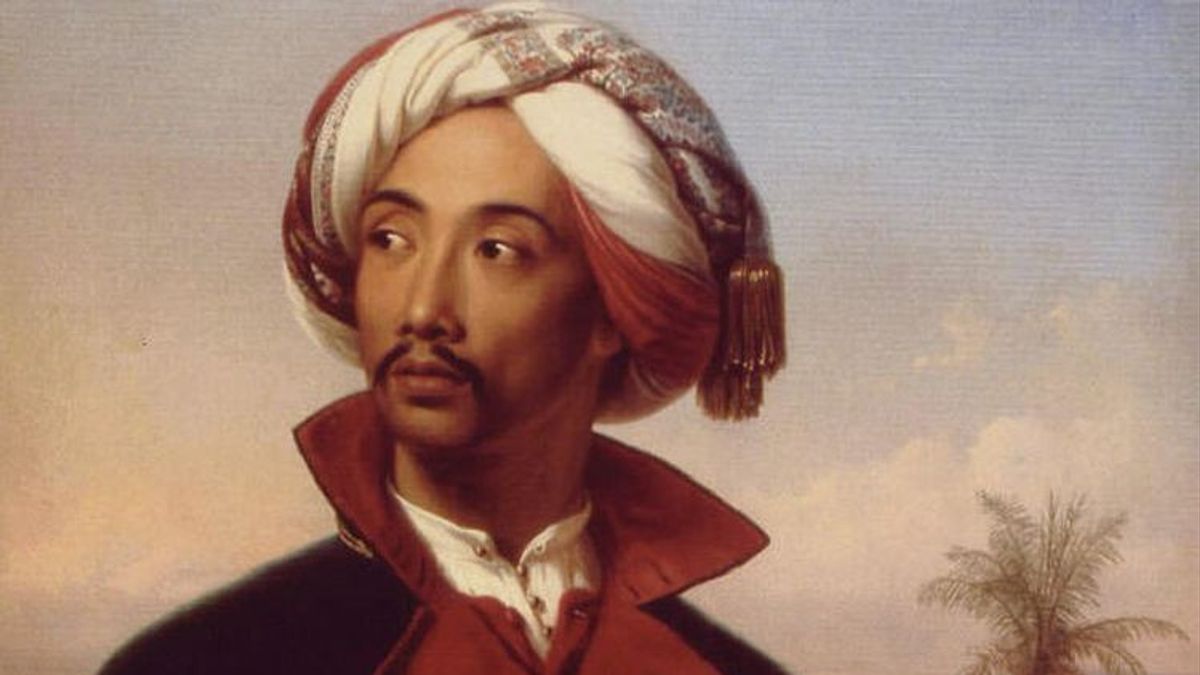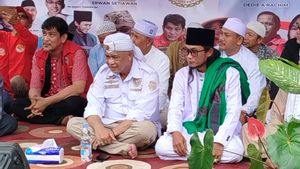YOGYAKARTA – Raden Saleh Sjarif Boestaman or better known as Raden Saleh is a pioneer of modern painter in Indonesia.
There are several paintings of Raden Saleh that are worldwide and received the highest bids in auction events, including the Bull Hunting aka Wild Bull Hunt (1855), Deer Hunting or The Deer Hunt (1846), Diponegoro's Arrest (1857), Lion Hunting (1840 and 1841) and the Wounded Lion (1838).
Raden Saleh is the first artist from Indonesia to paint with Western discipline. Therefore, it is not surprising that he is called a modern Indonesian painter. So, what is the figure of Raden Saleh?
Raden Saleh, Pioneer of Modern Writing in Indonesia
Raden Saleh is an Indonesian writer of Arab descent. He was born in Terbaya, near Semarang to Sayid Husein bin Alwi bin Awal and Raden Ayu Syarif Hoesein.
Information about Raden Saleh's birth year is confusing. In a self-portrait painting, Raden Saleh wrote that he was born in May 1811. However, in a letter, he once mentioned 1814, quoted from Historia, Friday, August 19, 2022.
Regarding the information on Raden Saleh's birth year, which is confusing, Werner Kraus—a German curator who has dedicated his life to studying Raden Saleh's works—more agrees that 1811 is Raden Saleh's birth year. The reason is, Raden Saleh learned to paint in 1819 when he was eight years old.
"It could be because in Java the Javanese (Saka) and Islamic calendars used to be calculated, so Raden Saleh was a bit confused when he had to adjust to the Gregorian calendar," said Kraus, adapting Historia.
Raden Saleh first studied painting with AAJ Payen, a Belgian citizen who was assigned by the colonial government to paint nature and landscapes in the Dutch East Indies.
Thanks to his painting skills, Raden Saleh had the opportunity to deepen his knowledge in the Netherlands in 1830. In the land of the Windmills, he learned to paint portraits with Cornelis Krusemen and landscapes with Andreas Schelfhout.
In 1839, Raden Saleh was given the opportunity by the Dutch government to travel to European countries. While in Paris, France, he met the famous painter Horace Vernet who influenced his color play. However, in terms of showing the atmosphere of the object of the painting, Saleh was influenced by the great painter of French Romanticism, Ferdinand Victor Eugene Delacroix.
According to Kraus, Raden Saleh never mentioned Delacroix's name. Krus suspected that Saleh had seen a Delacroix painting in a museum.
In 1844, Raden Saleh returned to the Netherlands and was awarded the Eikenkroon Star from King Willem II. During the reign of King Willem III, Saleh was appointed as the author of the Palace.
In 1851, Raden Salah decided to return to Java and marry a wealthy European woman named Miss Winkelman. However, the marriage did not last long. He divorced Winkelman and remarried a Javanese woman.
While in his homeland, Raden Saleh traveled to Central and West Java to paint portraits of kings and nobles. One of his monumental works is a painting entitled The Arrest of Diponegoro.
In 1857, Raden Saleh returned to Europe. In 1878, Saleh returned to Java, and died on April 23, 1880 in Bogor, West Java.
Such is the story of Raden Saleh, a pioneer of modern painter in Indonesia who has shaken the world. Hopefully it can add insight and inspire you.
The English, Chinese, Japanese, Arabic, and French versions are automatically generated by the AI. So there may still be inaccuracies in translating, please always see Indonesian as our main language. (system supported by DigitalSiber.id)









